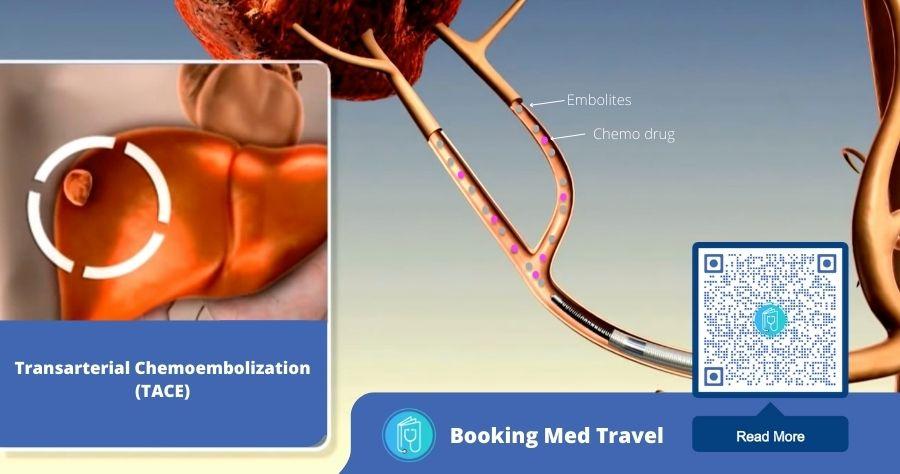Tran arterial chemoembolization (TACE) is a minimally invasive procedure used to treat liver cancer. It combines two approaches:
Chemotherapy: Powerful anti-cancer drugs are delivered directly to the tumor.
Embolization: Tiny particles block the blood vessels feeding the tumor, cutting off its blood supply and trapping the chemotherapy within.
Why choose TACE?
TACE may be a suitable option for several reasons:
Minimally invasive: It avoids major surgery, leading to quicker recovery and potentially fewer side effects.
Targeted therapy: Drugs reach the tumor directly, minimizing impact on healthy tissue.
Effective control: Can help shrink tumors, slow their growth, and improve symptoms.
Potential for combination: Often used alongside other treatments like surgery or radiation.
Types of TACE
Conventional TACE: Uses chemotherapy beads for remobilization.
Drug-eluting bead TACE: Employs beads that slowly release medication.
Radioembolization: Delivers radioactive particles to the tumor.
Benefits of TACE
Improved tumor control: Can shrink tumors in many cases.
Reduced symptoms: May alleviate pain, fatigue, and other cancer-related issues.
Potentially prolonged survival: Can extend lifespan for some patients.
Improved quality of life: Minimally invasive nature allows for faster recovery and return to daily activities.
Steps involved in TACE
Preparation: Discuss risks and benefits with your doctor, undergo tests, and stop certain medications.
Procedure: A thin tube (catheter) is inserted into an artery in your groin and guided to the tumor’s blood vessels.
Chemotherapy delivery: Chemotherapy drugs are injected directly into the tumor-feeding arteries.
Embolization: Tiny particles block the blood vessels, isolating the tumor and trapping the drugs.
Recovery: You’ll be monitored in the hospital for a while before going home.
Conclusion
TACE is a valuable tool for treating liver cancer, offering several advantages over traditional surgery. However, it’s essential to discuss its suitability and potential risks and benefits with your healthcare provider.
FAQs
While I cannot provide specific medical advice, here are some general questions about TACE that you may want to ask your doctor:
Is TACE right for me?
What are the risks and side effects of TACE?
What can I expect before, during, and after the procedure?
What recovery time should I anticipate?
What are the potential outcomes of TACE?

